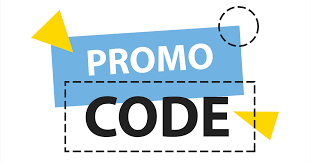Front-end web development is a crucial aspect of building modern, user-friendly websites. It encompasses the design, layout, and interactivity that users experience when they visit a site. To become proficient in this field, enrolling in a comprehensive Front-End Web Development course is a wise choice. This article will explore the essential components of such a course, providing a detailed overview for aspiring developers.
- HTML and CSS Fundamentals
The foundation of any front-end development course lies in understanding HTML (Hypertext Markup Language) and CSS (Cascading Style Sheets). HTML structures the content on a webpage, creating headings, paragraphs, lists, and more. CSS, on the other hand, styles and formats these elements, making them visually appealing. A comprehensive course will delve deep into these languages, ensuring a strong grasp of their principles.
- Responsive Web Design
In today’s digital landscape, a website must be accessible on various devices, including desktops, tablets, and smartphones. A quality front-end course will emphasize responsive web design, teaching students how to create layouts that adapt seamlessly to different screen sizes. This skill is invaluable in ensuring a positive user experience across all platforms.
- JavaScript and DOM Manipulation
JavaScript is a dynamic programming language that adds interactivity to websites. It enables developers to create features like sliders, pop-up modals, and form validation. Understanding the Document Object Model (DOM) is equally important, as it allows manipulation of webpage elements in real-time. A robust course will provide extensive training in JavaScript and DOM manipulation techniques.
- Frameworks and Libraries
Front-end frameworks like React, Angular, and Vue.js have become integral tools for building interactive and dynamic web applications. These frameworks simplify the development process by providing pre-built components and a structured architecture. Likewise, libraries such as jQuery offer a range of pre-written JavaScript code that can be easily integrated into projects. A comprehensive course will introduce these tools and guide students on how to leverage them effectively.
- Version Control with Git
Collaborative development is a cornerstone of modern web development, and version control systems like Git play a pivotal role in managing codebase changes. A quality course will introduce students to Git, teaching them how to create branches, merge code, and collaborate with other developers. This skill is vital for working on team projects and contributing to open-source repositories.
- CSS Preprocessors and Postprocessors
CSS preprocessors like Sass and Less enhance the efficiency of writing CSS by introducing variables, mixins, and nesting capabilities. Postprocessors like Autoprefixer automate the process of adding vendor prefixes, ensuring cross-browser compatibility. A comprehensive course will introduce these tools, enabling students to write cleaner, more maintainable CSS code.
- Build Tools and Task Runners
Build tools like Webpack and task runners like Gulp automate repetitive tasks in the development workflow. They handle tasks such as bundling and minifying code, optimizing images, and more. A thorough front-end course will introduce students to these tools, demonstrating how they can significantly streamline the development process.
- Performance Optimization and Page Speed
Optimizing website performance is crucial for providing a seamless user experience. This involves techniques like code minification, image compression, lazy loading, and reducing HTTP requests. A comprehensive course will cover these optimization strategies, equipping students with the skills to create fast-loading websites.
backend web development course
Conclusion
Enrolling in a Front-End Web Development course that covers these essential topics is a valuable step towards becoming a proficient front-end developer. By mastering HTML, CSS, JavaScript, and a range of modern tools and techniques, students can build engaging and user-friendly websites that meet the demands of today’s digital landscape. Embracing the principles outlined in this course will empower aspiring developers to create innovative and visually appealing web experiences.


